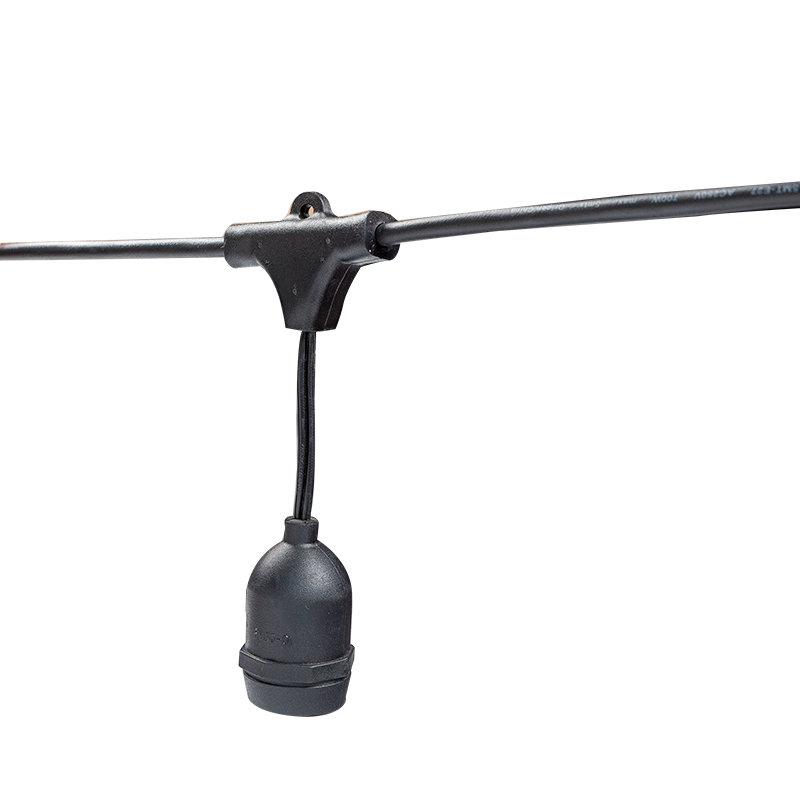String lights can have a significant impact on energy consumption, especially when used extensively, such as during holidays or for long-term outdoor installations. The type of string lights chosen plays a crucial role in determining both energy usage and the environmental impact. Here's a breakdown of how string lights affect energy consumption and the environmental benefits of choosing more energy-efficient options:
Incandescent bulbs consume more energy because they generate light by heating a filament, which is an inefficient process. A typical incandescent string light might use around 5-10 watts per bulb.Incandescent bulbs have a shorter lifespan, typically around 1,000 to 2,000 hours, which means they need to be replaced more frequently, adding to energy consumption and waste.
LED (Light Emitting Diode) string lights are much more energy-efficient, consuming up to 90% less electricity than incandescent bulbs. A typical LED bulb might use around 0.05 to 0.1 watts per bulb.LEDs have a much longer lifespan, often lasting up to 25,000 to 50,000 hours, reducing the need for frequent replacements.
Solar-powered string lights harness energy from the sun, storing it in batteries for use at night. They consume no direct electricity from the grid, making them highly energy-efficient and environmentally friendly.The environmental impact of solar lights depends on the quality and lifespan of the batteries used. Rechargeable batteries need to be managed and disposed of properly to minimize environmental harm.
Using LED or solar-powered string lights significantly reduces energy consumption, which in turn lowers the demand for electricity generation. Since much of the world's electricity is still produced from fossil fuels, reducing energy use directly decreases greenhouse gas emissions.Solar-powered string lights are especially beneficial as they rely on renewable energy, contributing to a decrease in reliance on non-renewable energy sources.

LED lights produce far less heat compared to incandescent bulbs. This not only makes them safer (reducing fire hazards) but also minimizes the energy wasted as heat, which is especially important in large installations.
The longer lifespan of LEDs means fewer bulbs need to be manufactured, transported, and disposed of, reducing the environmental impact associated with production, transportation, and waste.
LEDs are more durable and resistant to breakage compared to incandescent bulbs. This results in less waste and a reduction in the number of broken or burned-out bulbs that end up in landfills.
Although LEDs can have a higher upfront cost, their energy efficiency and longer lifespan lead to significant cost savings over time. Lower energy bills and reduced replacement costs contribute to both financial savings and a reduced environmental footprint.
Using energy-efficient lights conserves natural resources by reducing the need for energy production and the associated environmental degradation (e.g., mining, water usage).
LEDs contain fewer toxic materials (like mercury, which is found in some compact fluorescent lights) and are safer to handle and dispose of. Proper recycling of LEDs further minimizes their environmental impact.
Widespread adoption of energy-efficient lighting technologies can promote broader environmental awareness and encourage the use of sustainable practices in other areas, such as home heating, cooling, and overall energy management.
Choosing energy-efficient string lights, such as LEDs or solar-powered options, offers significant environmental benefits. These include reduced energy consumption, lower greenhouse gas emissions, decreased waste, and longer product lifespans. By opting for more sustainable lighting options, consumers can enjoy both cost savings and a positive impact on the environment, contributing to a more sustainable future.



 English
English русский
русский















